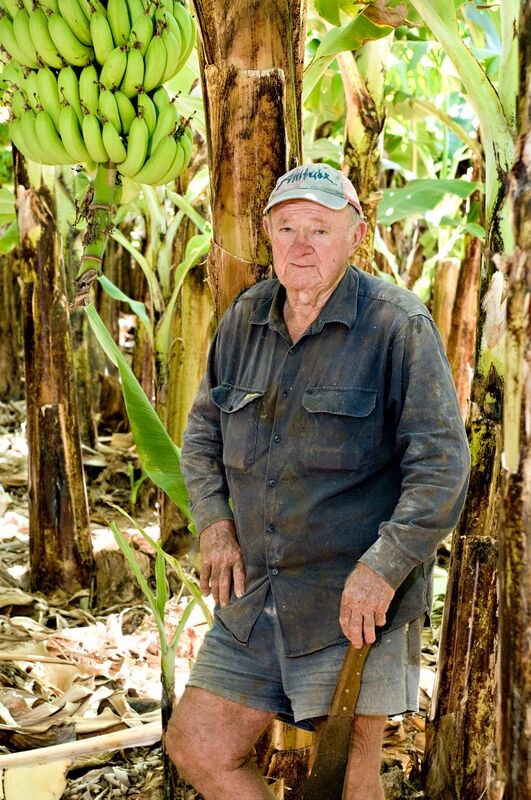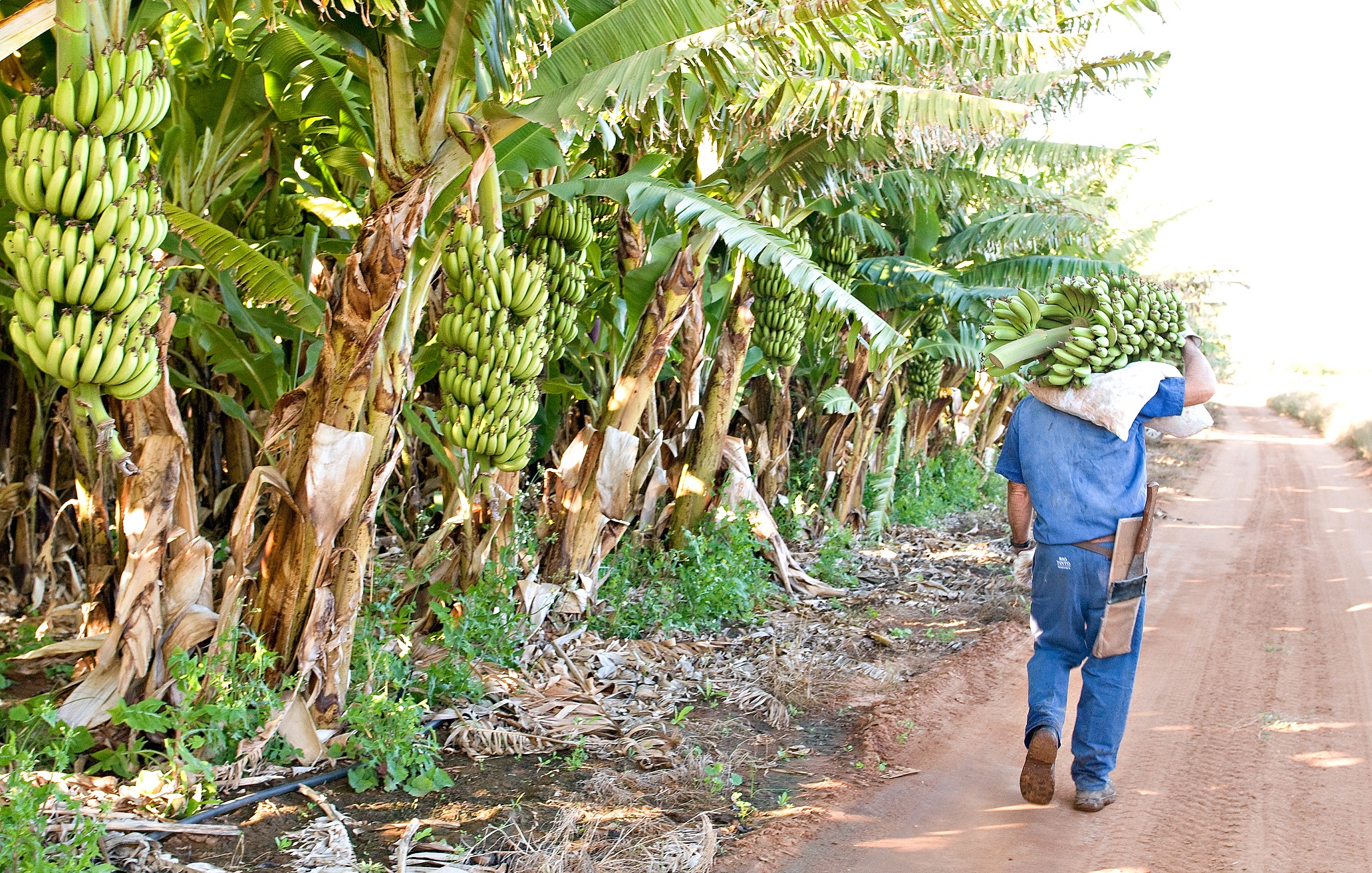Growers in Carnarvon that make up the Sweeter Banana Co-operative have created a niche market for their ‘desert’ bananas with sweet success—using some savvy marketing to prove big isn’t always best.
By Amy Spear
They do things a little differently in Carnarvon.
Bananas are grown where the desert meets the sea—a striking landscape that creates unique growing conditions and a distinct, now sought after product.
The Sweeter Banana Co-operative, formed in 1993, accounts for more than 60 per cent of production from the region in Western Australia.
In the years since those farmers formed an initial marketing alliance, the cooperative has grown into an organization that handles all aspects of business, bar the actual growing.
One of its key roles, even today, is educating the consumer.
“It’s a very dry climate,” explained business manager Doriana Mangili.
“We have less than 200mm of rainfall a year and sometimes it doesn’t rain at all.”
GROWING DESERT BANANAS
The crop is 100 per cent irrigated, pumped from aquifers underneath a river that may only flow for a couple of weeks a year.
“Our bananas are subtropical, they’re a lot smaller than the Queensland bananas,” said Ms Mangili, who’s been with the cooperative since 2005.
“We grow them quite close together to create a micro-climate, keeping the humidity in and the sea breezes out.” The tight quarters are necessary, but also result in more skin markings on the fruit—traditionally unacceptable for supermarket sale.
STANDING OUT FROM THE PACK
When Queensland bananas started appearing more on the local market, the perception was that Carnarvon growers had to match their image— larger fruit with unmarked skin.
Growers were throwing out roughly 30 per cent of their crop in the field and another 30 per cent in the packing shed.
“We were disposing of 60 per cent of our product and selling the rest at below cost of production— it just wasn’t very sustainable,” said Ms Mangili.
Enter the ‘lunchbox banana’.
The Sweeter Bananas Co-operative came up with the idea to take advantage of their product’s size, but also its flavour.
“Bananas take twice as long to grow in our region—14 to 18 months from planting until you harvest a bunch—and we pick them at a much riper stage than they do in tropical areas. The result is that they’re a lot sweeter and creamier.”
Their isolated location on the edge of the desert is another point they’ve been emphasising with consumers.
Without the presence of pests and disease, growers have no need for insecticides or pesticides.
CREATING A NICHE MARKET
The Co-operative has helped to ensure consistent quality from their growers and, as farms are only around 8 hectares on average, created economies of scale.
An account manager employed by the group is based in Perth and ensures they can independently source information, rather than relying on other market agents. “As an individual grower you simply can’t do this, but if you share the cost between 20 growers it’s possible,” said Ms Mangili.
Creating their own niche market means they’re also able to shield growers from at least some of the market volatility seen elsewhere.
This growing customer base hasn’t come without a lot of hard work.
The Cooperative has had an annual presence at the Royal Perth Show, handing out some 40,000 banana samples to the public.
They’ve organised in-store demonstrations, turned up at events around WA and talked to countless people about why their product is different. It didn’t hurt that, in 2012, a Curtin University study found that 4 out of 5 people preferred Western Australian bananas.
“We still only supply about 5 per cent of the Perth market, but we’ve gone from producing a product that we’d throw away 60 per cent of, to very low waste compared to the industry standard,” Ms Mangili said.
“We also created a smoothie product back in 2009 from bananas that don’t make the first grade. They’ve been selling successfully in Coles since then, advertised as perfect for smoothies. They’re exactly the same bananas, just ones with a few more skin markings.”
BUY WEST EAT BEST CAMPAIGN
Earlier this year the Sweeter Banana Co-operative, with support from other Carnarvon market agents Mercer Mooney and QPI, joined the WA Department of Primary Industry’s Buy West Eat Best campaign.
Ms Mangili said it’s been a great investment for the Co-operative and the Carnarvon industry more broadly.
“The whole campaign is based on the idea that by buying Western Australian produce, you’re supporting local farmers and their communities.
“Even when its promoting other products, like meat or fish, it’s still the ‘Buy West Eat Best’ brand, which appears on all of our bags.”
The campaign has included television, radio, bus signs, in-store material and social media—the Cooperative even flew one of their own growers and a bunch of bananas to Perth to be part of the TV component.
BOUNCING BACK
Of course, even the best marketing in the world can’t stop a cyclone in its tracks. In 2015, Cyclone Olwyn wiped out all of the Sweeter Banana Cooperative crop.
After 15 months without the Carnarvon product, consumers had moved on. Ms Mangili said it was almost like starting again—but that’s exactly what they did, and they’ve continued to win those customers back.
“As growers, we understand that it is our job to market,” she said.
“Our responsibility doesn’t stop at delivery. It’s not up to the retailers to push our product—if they can give us the space, then it’s our responsibility to market, promote and sell that product.
“People ask us what we’re doing differently. Ultimately, we just have an ordinary packing shed doing ordinary things. Our difference is in the marketing, promotion, the ability to have someone based in Perth. It’s our business model that’s the important part.”
It’s quite unique that a group of horticultural producers invest in something like a television campaign…
Doriana Mangili, business manager
TV Investment
Carnarvon bananas will make their way into Western Australian lounge rooms over the next 12 months with a dedicated television advertisement.
Backed completely by the region’s growers, rather than any industry bodies, the ad is part of the Good Choice campaign under the Buy West Eat Best program.
“It’s quite unique that a group of horticultural producers invest in something like a television campaign—particularly in WA but right across the board as well,” said the Co-operative’s business manager Doriana Mangili.
“It’s also a reflection of the mature industry in Carnarvon that 90 per cent of the growers collaborated together to get behind this industrywide campaign.
“It’s quite an achievement.”
Western Australian residents can keep an eye out for Chris Collins, the Co-operative’s chair, who features in the Good Choice advertisements.
He appears with his own bunch of bananas, flown to Perth specifically for the occasion.
For more information on the Buy West Eat Best program, delivered by WA’s Department of Primary Industries and Regional Development, visit www.buywesteatbest.org.au
Co-Operative looks at leasing for retiring growers

It can be tempting to think of retirement as a series of beers on the verandah at sunset, but the reality—as any grower knows—is much more complex.
Moving away from home is not always ideal, nor is the maintenance of a labour-intensive farm.
And in a small banana growing region like Carnarvon, the loss of a grower also has a significant impact on its ability to meet market demand.
The Sweeter Banana Co-operative may have a solution to this dilemma: leasing farms off retiring growers, who can choose to stay on at the property.
“The idea is that we will come to an agreement on lease fees, as well as a portion of electricity and water to run the farm. The retiring grower will still live there, but we’ll organise someone to take care of the crop,” explained the Co-operative’s business manager Doriana Mangili.
“They’ll make a small income from our lease and we’ll make an income from the sale of the bananas. It helps us to retain the volumes and introduce more best practice standards so we can continue to improve quality.”
The first property the Co-operative will manage belongs to Tom Day.
Mr Day is a founding member of the Co-operative and a board director with the ABGC. “It’s a good idea as it keeps up the numbers,” he said.
“It’s not much use having markets if you can’t supply the fruit. And the advantage is that I get to stay on the property.”
“I think it’s a win-win. People are getting older and it’s not easy work, there’s lots of intensive labor.”
As well as maintaining supply, the Co-operative may look to diversify their offerings, depending on demand.
“If we need to supply organic, for example, we could look at doing that on a particular property.
“As a co-operative we can take risks that individual growers may not want to,” Ms Mangili said.
“Obviously it has to work financially for our cooperative and its members, as well as for the grower who’s leasing us the farm.”
Both Ms Mangili and Mr Day believe that, with the right industry bodies on the ground, it could be a very successful model into the future—for Carnarvon and in growing regions across the country.


